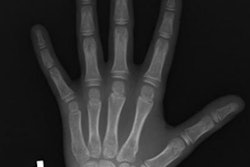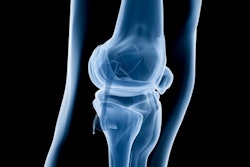
Artificial intelligence (AI) is poised to greatly improve all aspects of the musculoskeletal (MSK) imaging chain, helping radiology practices be more efficient while still maintaining accuracy and report quality, according to an article published online June 5 in the American Journal of Roentgenology.
In a review article, a team of researchers led by Dr. Soterios Gyftopoulos of NYU Langone Health in New York City offered an update on current MSK AI research in the literature and shared their thoughts on future directions for the technology.
"From assessing the appropriateness of imaging orders to helping predict patients at risk for fracture, AI can increase the value that MSK imagers provide to their patients and to referring clinicians by improving image quality, patient centricity, imaging efficiency, and diagnostic accuracy," the authors wrote.
The six key MSK AI applications include the following:
- Imaging appropriateness and protocoling: Two recent studies showed promising results for utilizing natural language processing to automatically determine MSK protocols and the need for contrast, according to the researchers. Future research will likely explore the use of increasingly complex AI classifiers.
- Scheduling: Machine-learning algorithms have been used to successfully predict patient imaging no-shows. These missed appointments -- particularly for MRI and CT -- represent a significant opportunity cost for radiology practices.
- Image acquisition and reconstruction: Early studies have shown promising results for knee MRI scans that are accelerated by machine learning, for example. In addition, machine learning offers an exciting new tool for reducing radiation dose in CT, according to the researchers. A recent study reported that more than 90% of readers indicated that the quality of low-dose CT images produced in part by an artificial neural network was equal or greater than CT images acquired using standard doses, the authors noted.
- Image presentation: By using smarter methods that process a variety of available data, AI offers the potential to revolutionize how a PACS displays information for radiologists, improving their efficiency, according to the researchers. These intelligent systems could overcome issues related to variable or missing data that can cause traditional hanging protocols to fail.
- Image interpretation: In MSK imaging, machine-learning algorithms have been applied to conditions such as fracture diagnosis, osteoarthritis, bone age, and bone strength.
- Quantitative analysis: With machine learning-driven image segmentation, radiologists could more easily assess the progression of osteoarthritis and degeneration of important stabilizing structures with advanced imaging sequences, according to the researchers. AI techniques have also rapidly increased the potential of radiomics to impact clinical care. For instance, algorithms can identify and collect characteristics that are not easily appreciated on images, leading to more precise treatment, the authors said.
"For example, to determine the most appropriate protocol, machine learning not only could draw from information on the examination order but could also potentially mine the electronic medical record, prior examination protocols and examination reports, CT or MRI scanner data, the contrast injection system and contrast agent data, the cumulative or annual radiation dose, and other quantitative data," the authors wrote.




















